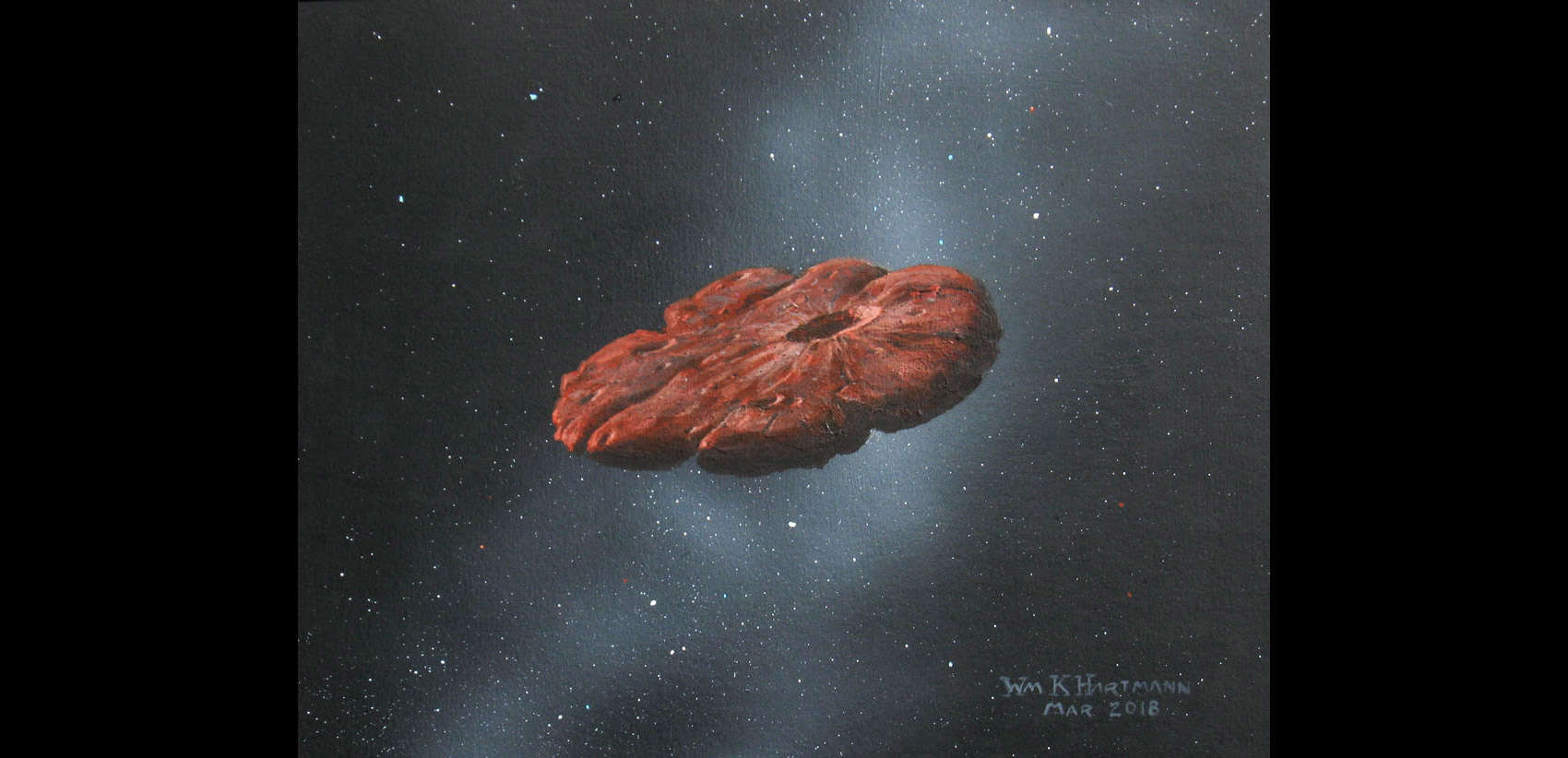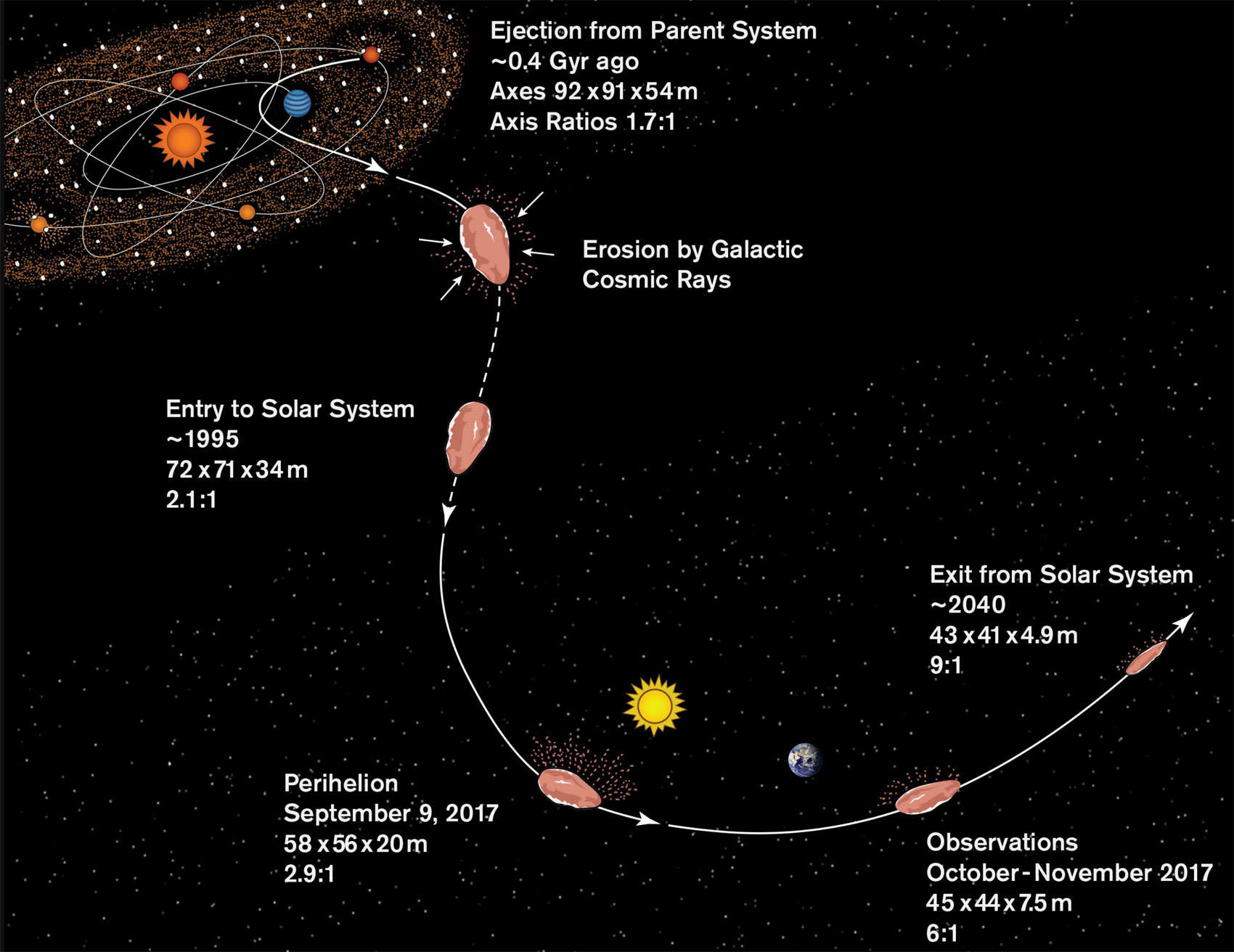Create a free profile to get unlimited access to exclusive videos, sweepstakes, and more!
Our first interstellar visitor 'Oumuamua may be an ice chunk blasted off an alien Pluto

In 2017, a mysterious interstellar visitor passed through our inner solar system.
Dubbed 1I/'Oumuamua, it defied explanation. Its orbit made it clear it came from interstellar space, but what was it? At first we thought it was an asteroid. When it passed the Sun and began moving back out into the depths of space, it was seen to be slowing, as you might expect as the Sun's gravity pulled it back… but it wasn't slowing enough. This made it seem more like a comet; if it were made of ice this would turn to a gas as it was warmed by the Sun, and that would act like a very weak rocket, accelerating it (what we call a non-gravitational acceleration).
But even then it didn't act like a comet. No carbon monoxide, carbon dioxide, or dust was seen, which are very common in comets.
On top of all that, it was brightening and dimming with a regular period, indicating it wasn't spherical (and as it tumbled we saw a different geometry reflecting sunlight back to us). That's common enough, but it must have been a really weird shape to explain the extreme change in brightness seen, either shaped like a pancake or a cigar!
Lots of attempts were made to explain it. It's a hydrogen iceberg (unlikely). It's a fractal snowflake (cool, but also unlikely). It's a spaceship (no).
Now a pair of papers has come out with an explanation that seems to check all the right boxes for 'Oumuamua, including how it formed: It's a chunk of debris blasted off a Pluto-like world orbiting another star, sent into interstellar space long ago and eventually crossing paths with our own solar system.
Cooooool.
The key to this is that non-gravitational acceleration, the rocket effect, as ice turned to vapor on 'Oumuamua's surface. The scientists looked at possible compositions that could explain this effect, things common to icy objects in our outer solar system, including frozen hydrogen, methane, carbon monoxide and dioxide, water, and nitrogen. Most of these for one reason or another don't do a good job explaining the observations… with the exception of nitrogen.
They used some equations to model its motion, solving them for its composition, reflectivity, and size, and found that if it's made of nitrogen ice then quite a few things snap into place. For example, the way nitrogen ice turns to gas fits the rocket effect seen.
Also, as I explained in an earlier article about 'Oumuamua, an object that starts off with a somewhat irregular shape will become more extreme as time goes on and it's eroded by passage through space or warmed by a nearby star (a bit like a rectangular bar of soap becomes a flat sliver as you use it and erode it away). If it started off like an oblate spheroid, a slightly flattened sphere, it would become even more flattened as it got near the Sun. If it were made of nitrogen ice then the way it eroded would fit the observations.
They also found it would be highly reflective, shiny, reflecting about 65% of sunlight that hits it. As it happens, that's about the same reflectivity as Pluto and Neptune's moon Triton, both with surfaces rich in nitrogen gas. That provides an easy source for its origin, too.
With this in mind, they came up with a timeline for 'Oumuamua's evolution, starting with its origin and eventual passage through the solar system.
Somewhere within a few thousand light years of the Sun was a star with a planetary system similar ours, with lots of icy bodies orbiting it far out, like our own Kuiper Belt. It had many larger bodies in it, Pluto-sized or bigger. When they formed, the heavier rocky material in these bodies fell to their centers and lighter ices rose to their outer layers, so they have lots of nitrogen ice on their surfaces.
About 450 million years ago, a collision with another object sends fragments of nitrogen ice into space. These would be up to a hundred meters across or so, and would orbit this alien star. Eventually one got too close to a big planet, or another star passed close enough to send this fragment into interstellar space. It would've been about 90x90x55 meters in size and had a mass of about 250,000 tons.
Eventually it passed near the Sun. Our star's heat started vaporizing the nitrogen, causing its acceleration to change, and the object shrank, flattening quite a bit. By the time it leaves the solar system in a couple more decades it will be more like 40x40x5 meters in size, and have a mass of only 5,000 tons.
If all this is true — and it seems to be the most likely explanation we've seen yet for 'Oumuamua — it implies a vast number of these are made over the lifetime of a solar system, something like a quadrillion of them! That would imply a given star would have a thousand or so Pluto-sized objects, but Pluto is small, so the total mass of all of them together would be maybe ten times the Earth's. So really, not implausible.
It's likely that there are quite a few of these objects passing through the solar system all the time, maybe hundreds or even thousands! They're small and faint, which is why they avoided detection until recently. As big survey telescopes go online in the next few years we should start seeing many more of them. It may be possible to determine if some are made of nitrogen ice, which would lend great support to this idea.
And then we'd know if we're seeing samples of the surfaces of exoworlds blasted off into space and brought to our own solar system from the depths of the galaxy.



























